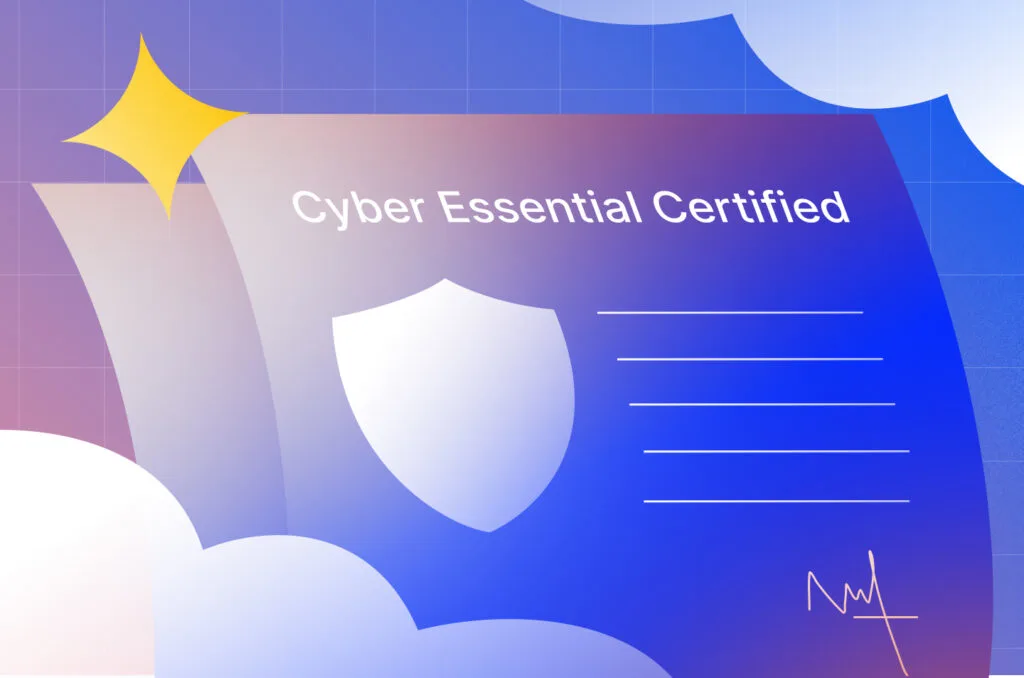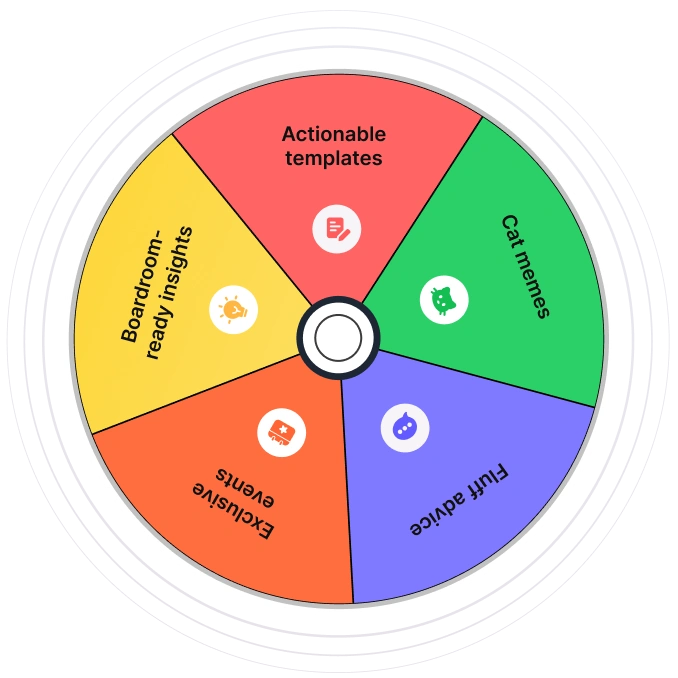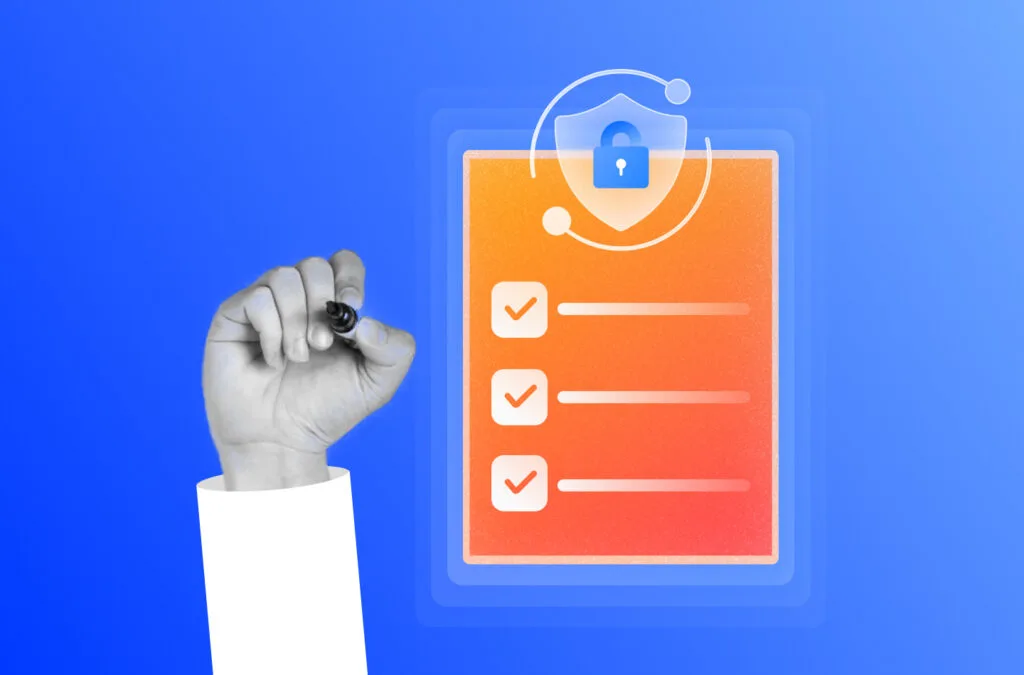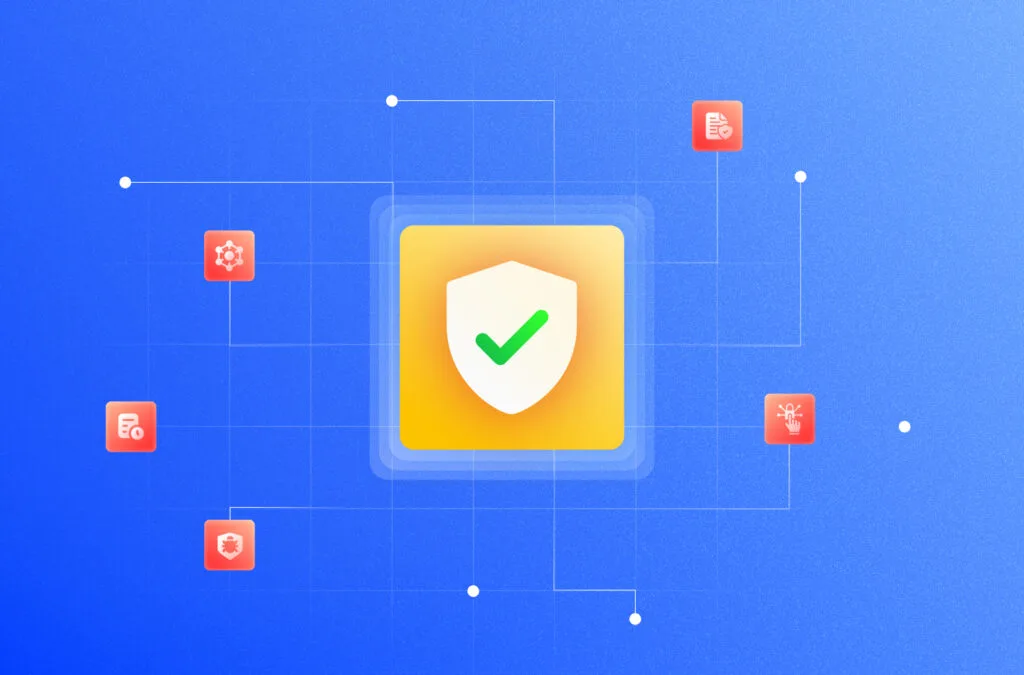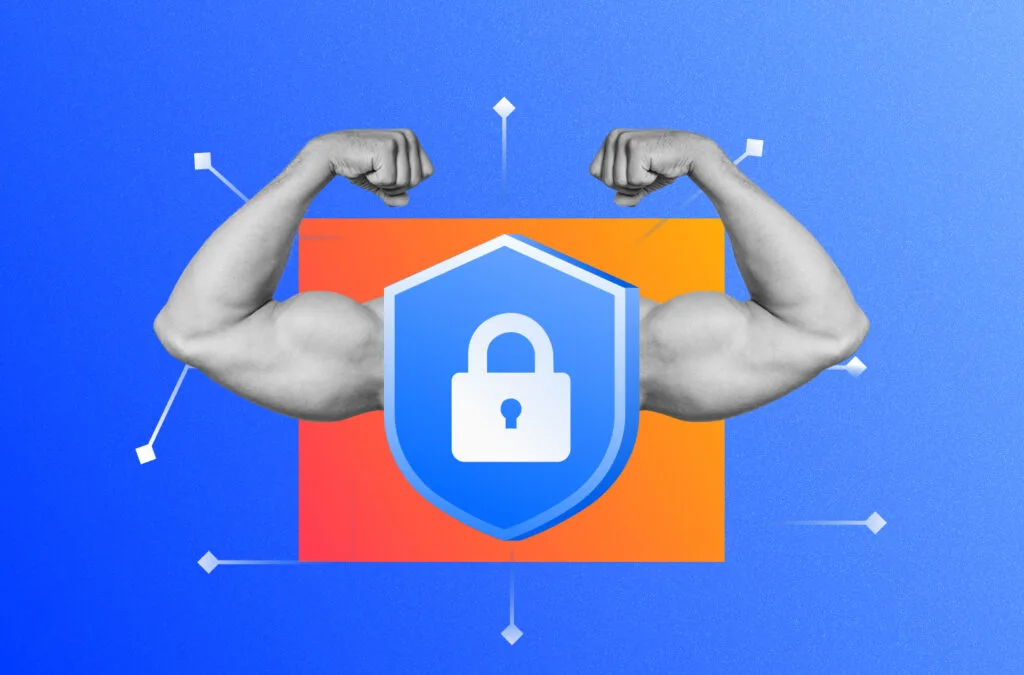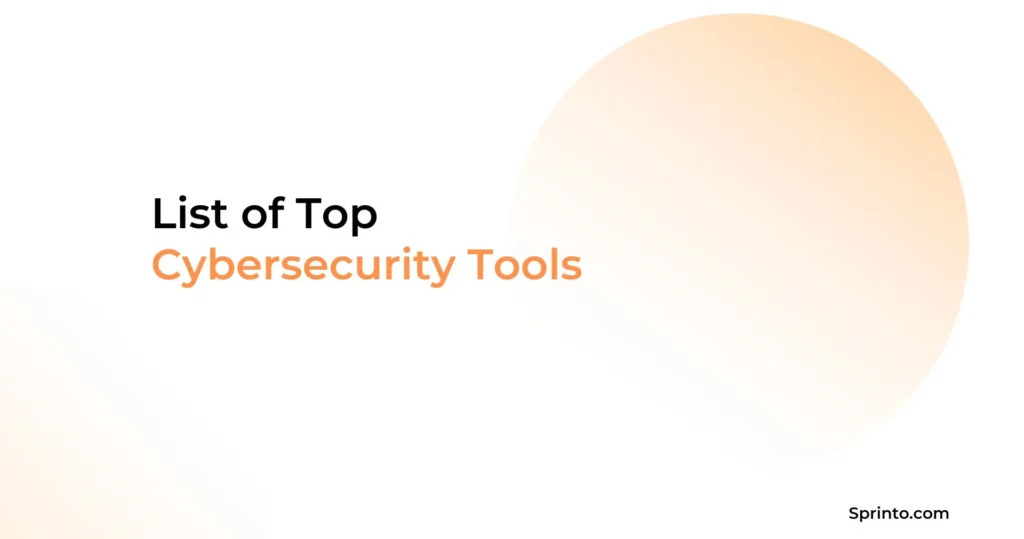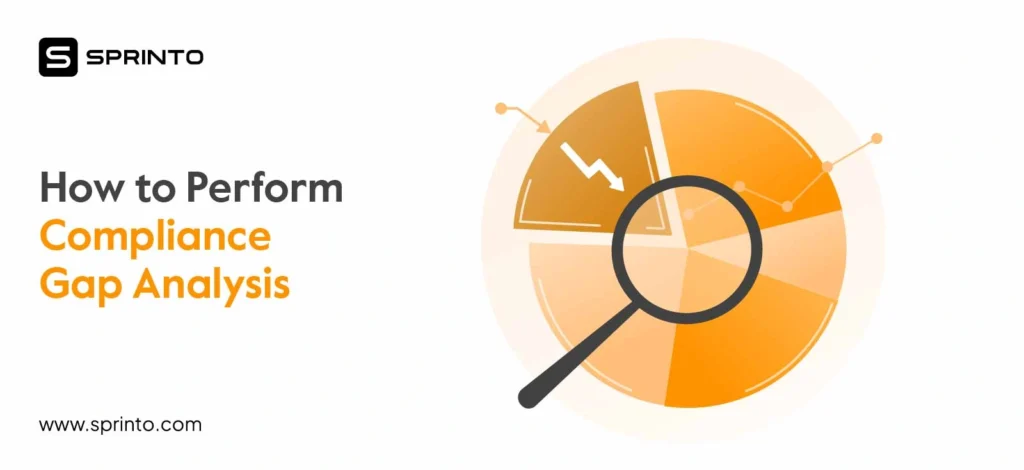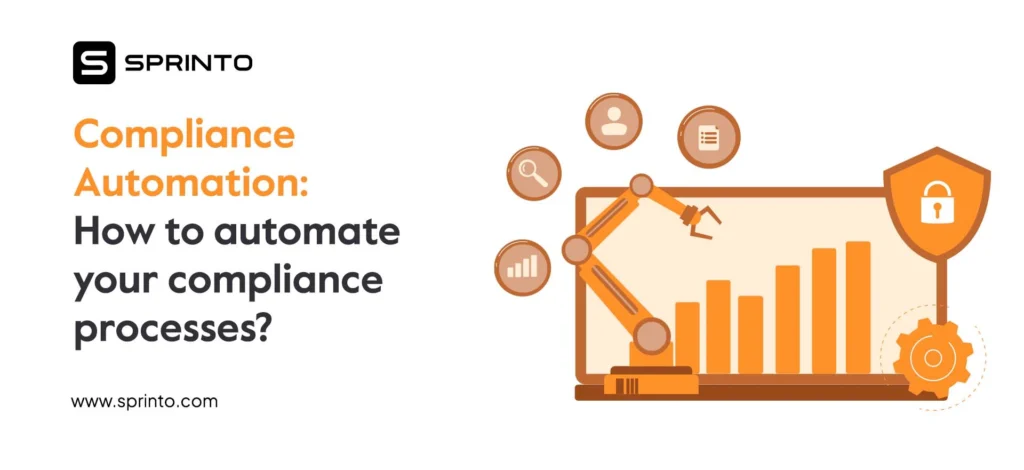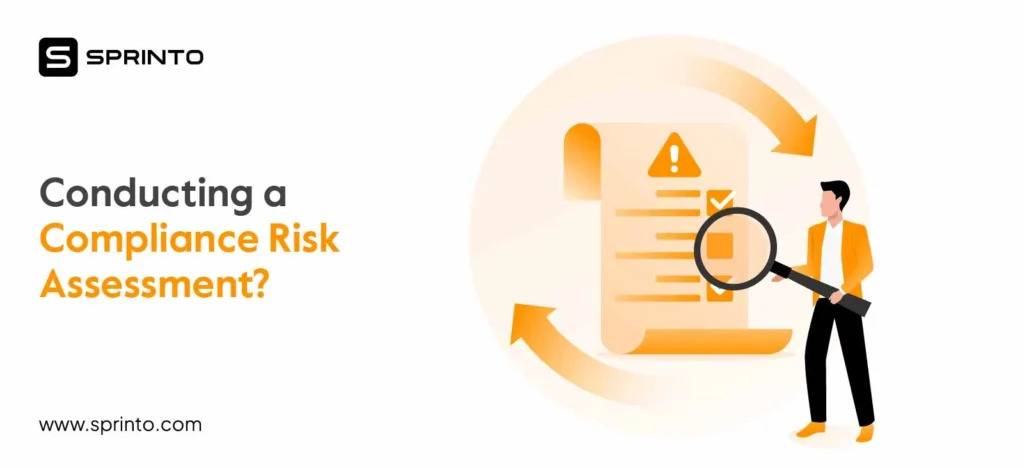How much does your business suffer from cyber threats? And with attacks taking a masterful turn, safeguarding sensitive data — and winning customers’ trust — requires more than just a firewall or antivirus software.
This is where Cyber Essentials certification comes in, a government-backed framework that helps organizations prevent the most common types of cyberattacks in a systematic way.
This guide will examine the details of the latest Cyber Essentials update (v3.1, Montpellier) and explore how its rigorous requirements can align with your security strategy.
Let’s uncover the answers.
TL;DR
| Cyber Essentials is a technical, multi-layered security model consisting of five key controls: firewalls, secure configurations, user access management, malware protection, and patch management. |
| Cyber Essentials certification is mainly targeted in the UK, however companies of other regions are free to use it. |
| The certification implements a minimum protection standard to help prevent common cyber risks. |
Why Do You Need a Cyber Essentials Certification?
Cyber Essentials is a cybersecurity certification framework that helps organizations protect themselves against common online security threats. First developed in the UK, it allows an organization to ensure it has implemented a minimum protection standard to help prevent common cyber risks.
Remember that this framework was launched in 2014, with guidance from the National Cyber Security Centre (NCSC), and is widely supported by the UK government.
Although mainly targeted at organizations in the U.K., companies outside of the area can still be certified through a relevant certification body. Cyber Essentials is a security qualification available globally, and it enables you to demonstrate that you are, in fact, taking security seriously and implementing good cybersecurity practices.
However, we are going to focus on the first one in this article. For more information on Cyber Essentials Plus, we urge you to read this article instead.
What are the Levels of Cyber Essentials Certification?
There are two distinct levels in Cyber Essentials certification, each tailored to different needs and levels of security assurance, namely Cyber Essentials and Cyber Essentials Plus.
But which one is right for your business? Let’s dig into the details:
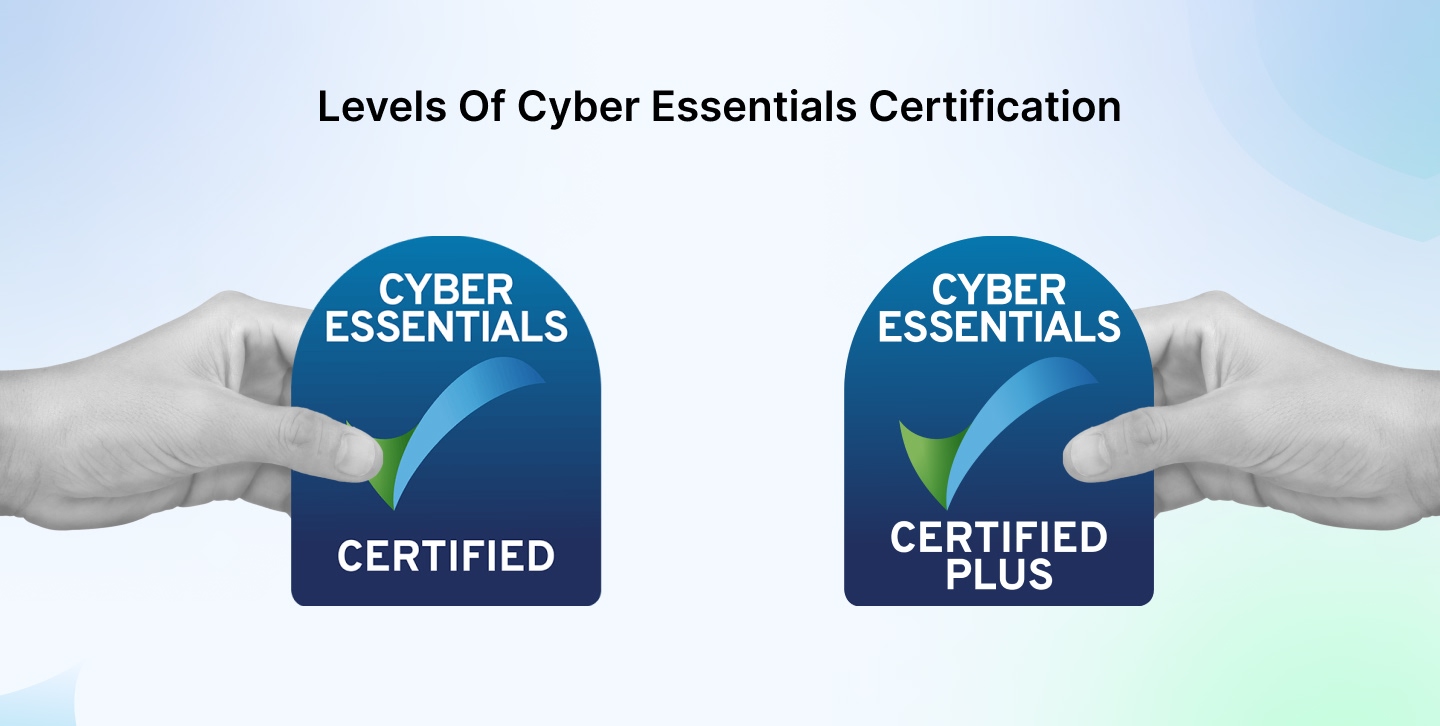
1. Cyber Essentials
This is the starting point—a self-assessment process where your organization evaluates its adherence to basic cybersecurity practices.
Often nicknamed “mark your own homework,” it’s designed to ensure you cover the essentials, such as firewalls, secure configurations, and access control.
Who Needs It?
Businesses looking to demonstrate a basic commitment to cybersecurity, often as a cost-effective option for smaller organizations or those new to compliance frameworks.
What Are the Benefits?
It’s a quick way to establish credibility and improve your defense against common cyber threats without requiring extensive resources or audits.
2. Cyber Essentials Plus
Now we’re talking — this is where it gets serious. Cyber Essentials Plus certification builds on the self-assessed Cyber Essentials certification and includes an in-depth external audit.
A qualified assessor performs extensive in-person audits, ensuring that your security protocols are both actionable and practical.
Who Needs It?
Organizations handling sensitive data, working with government contracts, or needing more assurance for clients and stakeholders.
What Are the Benefits?
The independent validation adds significant weight to your security posture, enhancing trust and often meeting stricter regulatory or contractual requirements.
How to Get Cyber Essentials Certification?
Obtaining Cyber Essentials certification requires installing strong cyber protection and safeguards against around 80% of the most commonly used cyber threats used to attack organizations.
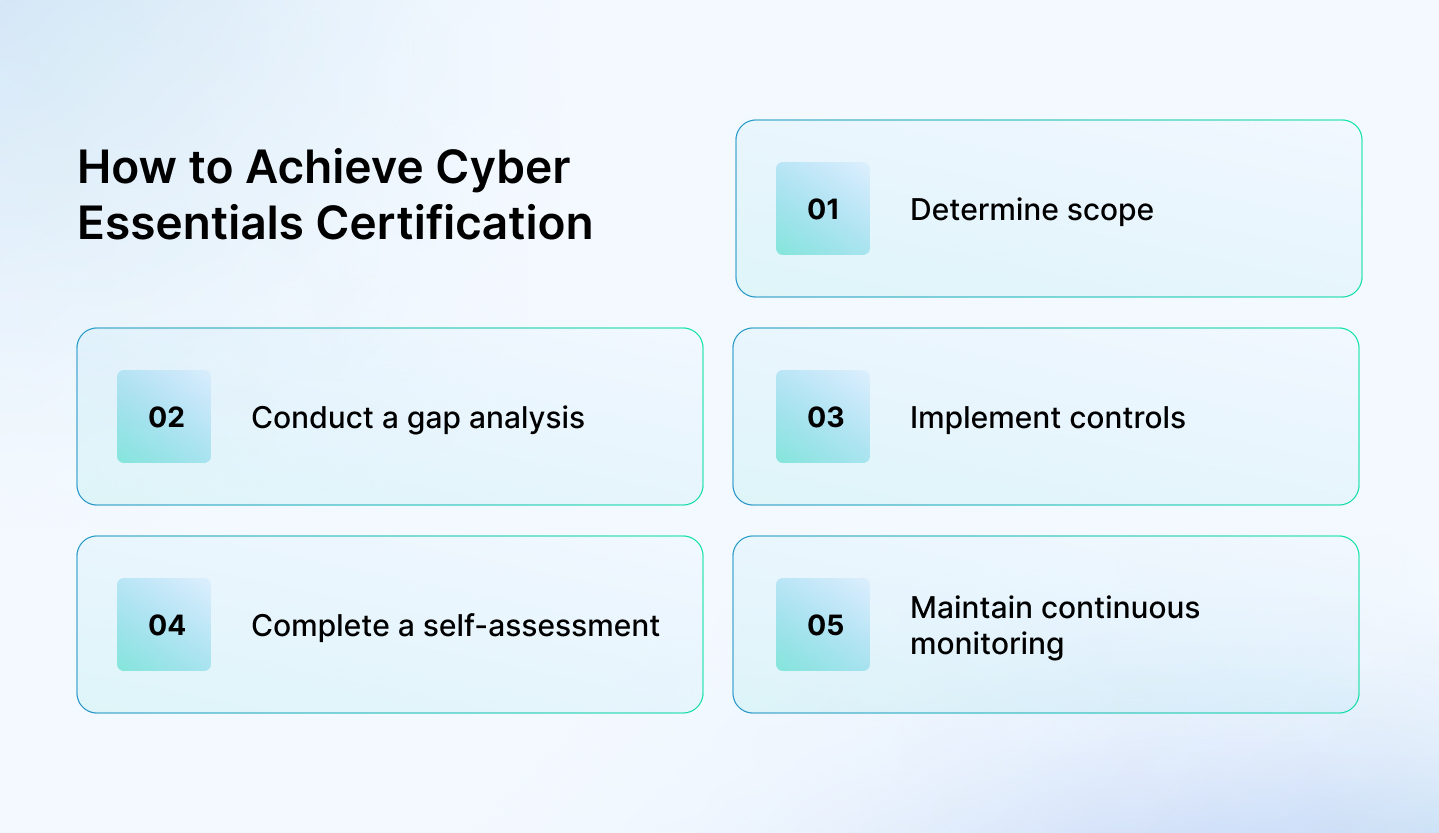
The controls are centered around five key areas: firewalls, secure configuration, user access management, malware defense, and patch management.
Here’s a five-step-by-step guide to go through the process after talking to our internal compliance experts:
1. Determine Your Scope
The first step in starting on the Cyber Essentials certification journey is to determine the scope of your certificate. That’s deciding which aspects of your organization’s IT degrees the certification will cover.
If you are looking to apply the scope to your enterprise IT infrastructure or just a subset — for instance, a specific department or a specific set of systems. Now, a clear and good definition of scope is important because it creates boundaries for the assessment. For example:
- Full Enterprise IT: This includes all the devices, networks, and services your organization uses. It’s comprehensive but requires a higher level of coordination.
- Subset of IT Systems: This is ideal for organizations with distinct business units or IT environments. For instance, you might certify only the systems for handling customer data or specific internal services.
2. Conduct a Gap Analysis
The gap analysis stage is where you take a magnifying glass to your existing infrastructure, policies, and technical controls. Identify discrepancies that need to be addressed to meet the certification standards. Here’s how you can do it:
Audit Security Measures
Begin by reviewing your firewalls, access controls, malware defenses, and patch management. Are these systems robust, or are there cracks that need attention?
Pinpoint Gaps
Compare your current practices against Cyber Essentials requirements. Where do you comply? Where do you fall short? This analysis is your blueprint for action.
Document Risks
Clearly outline non-compliant areas, the risks they pose, and why they matter. A detailed record ensures everyone—from IT to leadership—is on the same page.
Sprinto Advantage
Sprinto simplifies the process by integrating with your cloud systems to automate control mapping and identify compliance gaps. With automated checks, you’re curbing compliance drift proactively.
Also, Sprinto helps collect evidence to improve security posture and is one step closer to meeting cyber essentials requirements.
3. Implement Required Controls
Securing Cyber Essentials accreditation requires a focused effort to implement five key controls that act as a barrier against cyber threats:
- Firewalls: Your first line of defense, ensuring only safe traffic gets through.
- Secure Configuration: Optimize user devices and systems to reduce vulnerabilities.
- Update Management: Regularly patch and update software to address emerging threats.
- Access Control: Limit user permissions to only what’s necessary for their roles.
- Malware Protection: Deploy tools to detect and neutralize malicious software.
Here’s how to tackle these controls systematically with automation first approach:
Automated control testing
An automation-first approach simplifies Cyber Essentials compliance by streamlining control testing. Automated tools like Sprinto connect seamlessly with your cloud setup to test basic security controls and collect evidence directly from source systems.
This, in turn, eliminates manual errors and ensures real-time accuracy.
Sprinto’s dashboard offers a clear view of control status, marking them as passing or failing and enabling swift action. Alerts notify control owners about any deviations or failures, helping you address issues before they escalate.
With over 200 integrations and API-driven automation, Sprinto ensures compliance efforts are efficient, proactive, and scalable, saving time while bolstering your security posture.
4. Complete an SAQ
After being prepared for the Cyber Essentials certification, completing the Self-Assessment Questionnaire (SAQ) is the next step. This questionnaire assesses your company’s cybersecurity practices against the requirements of the framework.
Once you’ve completed the SAQ, it goes through a review process. At this stage, your team or an expert will carefully examine the answers to ensure they meet the scheme’s standards.
Again, this is a really important step because it is critical to determine if inaccuracies or omissions could delay or even prevent certification.
5. Implement Continuous Monitoring
Once controls are in place, continuous monitoring becomes critical to ensure they function as they should. Monitoring your network devices helps identify vulnerabilities and resolve issues, ideally before they impact your systems or derail your certification process.
Here’s where Sprinto makes a difference. Sprinto enables real-time oversight by consolidating your compliance data into a single source of truth. This unified view of all the controls helps verify the maturity of your practices and provides accurate reporting, reducing the guesswork in compliance audits.
With Sprinto, continuous monitoring becomes less about surprises and more about maintaining control.
Ensure robust control monitoring
Benefits of Cyber Essentials Certification
The benefits of Cyber Essentials Certification start with showcasing your commitment and help build trust with partners, clients, and stakeholders. The National Cyber Security Centre’s review underscores its impact:
- 93% of certified organizations feel better protected against internet-based cyber threats.
- 61% say they prefer suppliers with Cyber Essentials certification.
- Certified organizations often go beyond the scheme’s requirements, adopting broader security measures and fostering a culture of cyber awareness
Here are a few benefits of getting this certification:
Work with Key Government Entities
If you aim to collaborate with the UK government or the Ministry of Defence (MoD), Cyber Essentials is non-negotiable. While the basic certification meets government requirements, achieving Cyber Essentials Plus unlocks opportunities with entities like the MoD, signaling your commitment to heightened baseline security standards.
Improves Your Security Processes
How much of your organization’s cybersecurity posture relies on reactive fixes rather than proactive strategy? With Cyber Essentials, the focus shifts entirely.
Beyond merely mitigating 98.5% of common cyber security threats or avoiding GDPR fines, this framework pushes you to adopt an approach to cybersecurity that is not just limited to patchwork solutions.
Where are your current gaps? Which processes are outdated? These are the tough questions Cyber Essentials forces you to confront.
Bid for Government Contracts
What is preventing your business from securing a lucrative MoD or government opportunity? A Cyber Essentials certificate – it can be that easy. This is your gateway into large-scale projects and long-term partnerships in the public sector.
At this point, the fact that your company has Cyber Essentials certifications sends a message to government bodies that you have some good security measures in place to keep sensitive data and critical systems safe.
Save big on Cyber Essentials Certification costs
Cyber Essentials Certification Cost
The cost of Cyber Essentials certification in the UK depends on organizational size, number of locations, and current level of maturity of cyber security solutions. The standard cost structure is as follows:
- Micro businesses (0-9 employees): Certification starts at £300 + VAT.
- Small businesses (10-49 employees): The cost rises to £400 + VAT.
- Medium enterprises (50-249 employees): Expect to pay £450 + VAT.
- Large organizations (250+ employees): Certification costs £500 + VAT.
However, this is just the starting point. Costs can climb depending on your organization’s support to meet Cyber Essentials’ five key control areas: firewalls, secure configurations, user access control, malware protection, and patch management.
Certification may be straightforward if your infrastructure aligns closely with these controls. However, for others, additional investments in technology, training, or consultancy may be necessary.
The question isn’t just “How much does it cost?” but also “How prepared is your organization for this step?” Hence, prepare thoroughly to make it work.
Ready to Certify for Cyber Essentials Certification?
So, you have decided that Cyber Essentials certification is ideal for your organization. A vital step in safeguarding your business from cyber threats.
If you’re feeling like cybersecurity compliance is a heavy lift, let Sprinto lighten that load 🙂
No more spending through eons to get the nitty-gritty right, Sprinto has pre-approved, auditor-ready programs that you can set in motion with a few clicks.
With Sprinto, you get access to a library of compliance controls that are already aligned with cyber essentials standards. Automation tracks your progress, gathers evidence, and makes it super easy to stay on top of your security measures.
And when it’s time for the audit, Sprinto lets you connect with auditors directly, submitting evidence in real time and speeding up the entire process. With Sprinto, compliance becomes not just manageable, but straightforward.
FAQs
What is the duration of the Cyber Essentials certification?
The Cyber Essentials certification remains valid for one year. After this period, organizations must renew their certification to retain access to the Cyber Essentials logo and the dedicated online community.
Is Cyber Essentials Mandatory?
Although not mandatory for all businesses, certain situations necessitate Cyber Essentials certification. For instance, organizations aiming to bid on a particular government contract should have Cyber Essentials certification. These contracts often involve managing personal data or providing IT products and services, making the certification a requisite.
How long does a cyber essential certification take?
The time taken for a company to get Cyber Essentials certification depends on your audit readiness, existing cyber resilience measures, and how fast you will complete the requirements that comply with this scheme. The procedure will normally take several weeks or just a few days to a couple of weeks.
Meeba Gracy
Meeba, an ISC2-certified cybersecurity specialist, passionately decodes and delivers impactful content on compliance and complex digital security matters. Adept at transforming intricate concepts into accessible insights, she’s committed to enlightening readers. Off the clock, she can be found with her nose in the latest thriller novel or exploring new haunts in the city.
Explore more
research & insights curated to help you earn a seat at the table.



